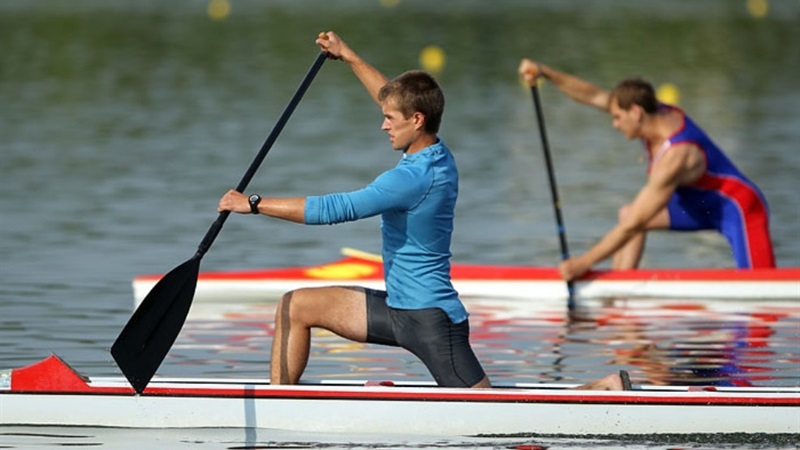Rowing is a sports activity that consists in moving a boat with or without a helmsman by pushing it forward due to the muscular strength of one or more athletes (hereinafter referred to as rowers), using oars as a lever with an axis of rotation rigidly attached to the hull of the boat, and sitting back in the direction of the boat.
Types of rowing
Rowing includes four sports disciplines: academic rowing, coastal rowing, folk rowing, indoor rowing.
Academic rowing, a type of rowing on special sports courts – narrow (single boat width – 30 cm, eights – 60 cm) boats with oarlocks (taken overboard) and movable banks (seats). There are rowing vessels for rowing (athletes are distributed equally on both sides; each rows with one oar) and paired (each rows with two oars).
Rowing has been included in the program of the Olympic Games since 1896 (for women since 1976). In addition to the Olympic Games, the World Championship, the World Cup, the Nations Cup, the World Championship among students, the World Championship among youths are held annually.
Rowing competitions are held among men and women. The composition of the boat is from one, two, four or eight rowers.

Rowing techniques
There is no perfect rowing technique, each “academician” has his own technique based on different feelings and ideas about rowing. The task of the coach is to maximally adapt the athlete’s individual rowing technique to various conditions.
There are two main points in stroke technique – the beginning (also “hook” or “capture”) and the end of the stroke. Both affect the balance, speed, and trajectory (both horizontal and vertical) of the boat.
With an increase in the crew (i.e. rowers in a boat), the value of these two moments increases, since in the “ideal” the moment of the beginning and end of the stroke of all crew members should be the same, in fact, the difference between rowers (for professional rowers) in one crew at the time of the beginning (or end) of the stroke is a few hundredths, and sometimes tenths of a second.
For “academicians” it is typical to move backwards, and the correction of the movement of the boat is carried out along special paths (buoys).
Coastal rowing is a discipline of rowing, competitions in which are held in the sea and river waters. It is considered more extreme and spectacular, since the performance of the teams competing along the coast takes place in unpredictable weather conditions.
Participants use special boats with high seaworthiness and speed characteristics.
The distance can be up to 8 km and represent one or more circles with turns around the buoys. In addition, during the race, the crews must not only show the best time, but also cope with the elements without losing valuable seconds in the fight against waves and wind.

Unlike the classical distance in rowing, coastal rowing competitions can start from any place in the water area, respectively, the design of the boats allows you to go out on the water and immediately start without the help of special holders and the presence of starting rafts. Sometimes the competition program also includes running from the starting line on the shore to your own boat, which you need to get into as quickly as possible and continue the race with rivals already on the water.
Folk rowing – rowing on special single boats and double boats with a coxswain. Sports boats for competitions in folk rowing are distinguished by a fixed “can” (seat) and the greatest stability on the water.
Folk rowing competitions are held on “smooth water”, in the waters of lakes and narrow rivers, the rules are similar to the rules for rowing competitions. No more than ten crews can start at the same time in one race in folk rowing.
Rowing machines are an integral part of the training process for athletes in preparation for competitions, especially in winter. Ergometers have been used in training since the 50s of the last century.
In recent years, indoor rowing has ceased to be just a part of the training of professional rowers, but has grown into a separate discipline with its own competitions.
Traditionally, indoor rowing competitions are held at a distance of 2000 m, equal to the classical distance of rowing regattas. Races of 500 m or 6000 m are also possible.
